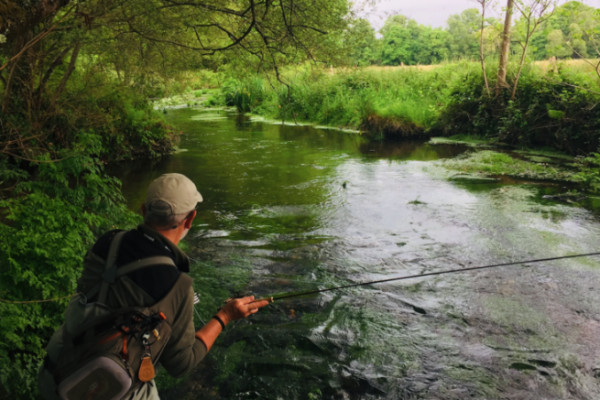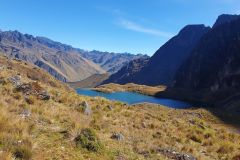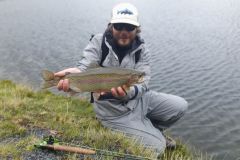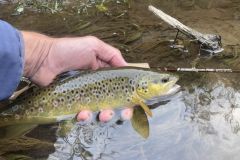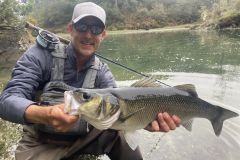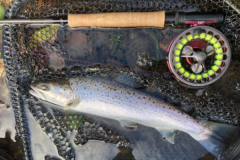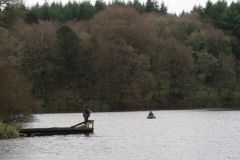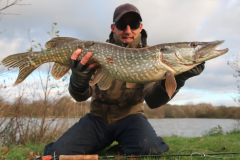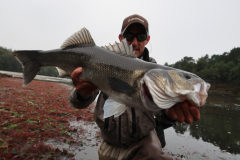Fly fishing on small rivers requires a few adjustments, especially when you fish mainly on medium or large rivers (over 20 m wide). Of course, you'll need to adapt your equipment and your approach to fishing, but you'll also need to master all the casts that are part and parcel of our beautiful discipline!
It's a very dynamic and formative fishery that requires precision, patience and humility, and is often crowned with success if you do the right thing!
Get off the beaten track!
There are many advantages to fishing small rivers. The first is that the water warms up more quickly than in larger, deeper rivers. The water level is lower. As a result, insects emerge earlier, and dry-fishing aficionados will be able to fish successfully as early as April. Fish also have a longer period of activity and are often less selective. Fishing pressure is also lower on these smaller, more technically challenging rivers.
The downside is that you're fishing in very little water and every detail counts. Levels also drop earlier and some of these rivers will be difficult to fish later in the season. It's a fairly technical fishery and you'll need to be a good caster to fish each position correctly and achieve the right drifts.
This is a fishery of precision and discretion. You have to fish at short distance to favour precision and quality of presentation. Current veins are more numerous. Short drifts are required, but beware of dredging! Relaxed landings are often necessary but not always easy to achieve in this sometimes hostile environment. You need to master wiggle casts, sky shots and aerial mending.
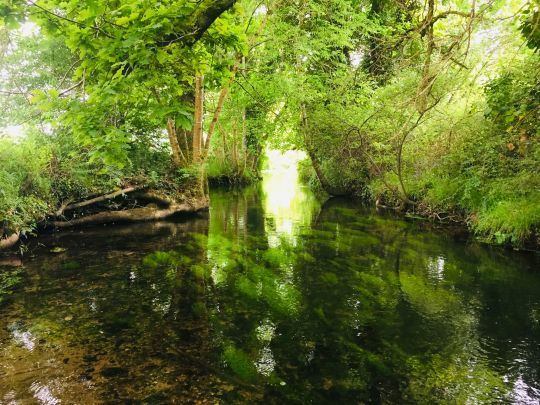
Fly side
In terms of flies, give preference to imitations of Trichoptera of all kinds. This is the basic fly. A selection of 2/3 models in 3 sizes (14, 16 and 18) and you're all set. A few duck asses in gray, brown, olive and black will imitate the main mayflies. A colored tuft (yarn or other) on top of the fly will make it easier to spot under dense plant cover. A handful of ENTs, and of course a few more specific flies that will need to be adapted according to the season and current hatchings: mayfly, sulphur, Ecdyo, "pleco". Observe what drifts. But above all, don't leave out all the terrestrials that are used here earlier and much more often than in larger rivers. Indeed, these small streams are lined with woods, meadows and dense riparian vegetation. Insects of the orders Diptera, Orthoptera and Coleoptera are legion and are often found in the water. Not forgetting Hymenoptera (ants), just in case in summer. Trout love them!
If the fish shy away from the surface, tandem fishing is often both effective and fun. These rivers are often shallower, and the dry-nymphe rig works wonders. What's more, you can keep a few fish in the dry, and they'll come up and take it, even if activity is limited. It's always a pleasure.
Pheasant tail and variants, ORL, sedge larvae, baetis imitation and predominantly black nymphs, will enable you to catch fish in all circumstances by adapting the weighting to fish at the right height.
Don't hesitate to change the length of the leader (stem) often between the two flies, especially if the positions vary a lot. This may take a little time, but it can sometimes make it easier to fish a deeper, more promising shot. Beautiful trout often like deep and/or crowded spots.
Nymph fishing with line is often very productive but not always easy because of the surrounding environment. Shorter rods are preferable, except on more open stretches where a 10' 2" silk can be used.
I usually use a single fly, especially at the very beginning of the season, as the fish are often stuck to the bottom. Later on, I use a heavier fly on the tippet and a "light" fly on the stem above. This is often very effective.
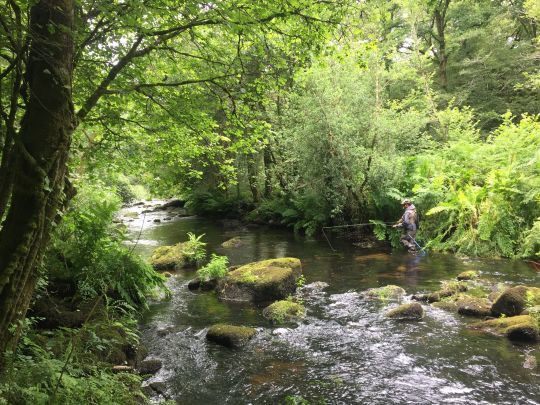
Perfect your casting techniques
In all cases, fishing here is more technical in terms of casting. Even if in large rivers, you'll need to be able to cast far and know a few specific casts to make long, beautiful drifts. In narrower, more crowded rivers, the angler will need to know how to use the full panoply of casts that our technique makes available to us.
Starting with the backhand cast, which many of us don't master sufficiently due to lack of practice and laziness. This fairly simple shot allows you to tackle positions that you can't do with a straight shot without changing banks. Backhand, angled backhand, horizontal backhand. Each of these casts will open up new and interesting perspectives for your future fishing outings.
Roll casting is yet another string to your bow. Still less used and practised by most anglers. Whether you're casting 5 m or 10-15 m or more, you need to know how to putt. Backhand or forehand roll. Shooting silk. With different types of landing. To be precise and delicate. You have to work at it like any other throw.
The roll does not allow you to change direction, but has the advantage of casting with little clearance. Very useful in small rivers.
Finally, a throw that seems simple enough, but is often poorly executed. The crossbow cast! Whether dry or nymph or even tandem. In small rivers, especially those that are very crowded and where pretty, quiet trout are often to be found, this cast allows you to drop a fly into mouseholes with great precision. To flush them out where no other cast is possible.
Adapting: the key to success
The key words in small-river fishing, but which are valid for all fishing in the end, are: observe, analyze, adapt.
Once you've understood that fishing requires an evolving strategy, I think you've got it. Under no circumstances should you repeat what you've already done. It's good to have a plan of attack, of course, but constantly adapt it to what's happening on the water and in your environment, whether on a river you know by heart, or on a new spot.
Trying to reproduce what you did the day before is often synonymous with failure, or at least missing out on some of the day's fishing. Conditions change every day and several times a day. Water temperature, light, presence or absence of sunlight, atmospheric pressure, etc., are constantly changing. Each of these factors influences hatchability, fish activity, preferred positions, and therefore fishing. We need to take all these factors into account to modify our approach as the fishing trip progresses.
On these small streams, there's no room for error. Fish can be fearful, as we usually attack them at close quarters.
In my opinion, the approach is 50% of the success. Walk very slowly without making waves or noise. Use your environment to camouflage yourself. It's often possible to catch trout a rod's length away!
Don't hesitate to go after the trout in the tricky spots where no one else goes. If you hang on, you'll be able to fetch your fly anyway. Big trout like crowded, deep, shady spots. Go and flush them out!
Choosing the right cast, type of landing and length of drift for each "good" position can make a big difference in the end. The first drift is often crucial. Much more so than the fly pattern in general. So concentrate and apply yourself.
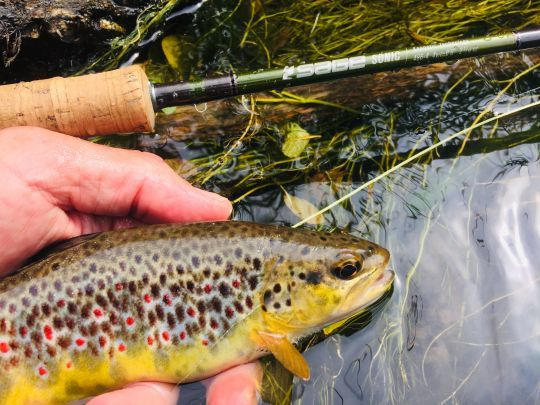
Let's talk hardware
Short 6- to 8-foot semi-quick-action rods are often the norm, for 2 to 4-length lines. Occasionally, a 9-ft. rod will provide better fishing in very fast areas (to avoid dredging), or with a crossbow (to cast farther).
WF short "special" silks for small rivers are a must. I use the Rio Creek which was designed for this type of fishing. A light, matte reel to avoid spooking the fish. Just like a dark or camouflage outfit to be invisible or almost invisible.
A leader that is neither too long nor too short. Too long and you won't be able to develop it properly. Too short and the drift will be less good. You need a suitable leader for each technique and river width. Modify it as you go along. For dry fishing, nymph tackle, tandem, I personally use a tapering leader, fast in maxima chameleon up to 20° where I make a micro-loop, one and a half rod lengths long. Then make a pre-tip in 18° (if tip in 15°) for a more delicate setting, or no pre-tip for a faster setting, or 15° (if tip in 12°) longer before the tip of 1 to 1.5 m in nylon.

 /
/ 